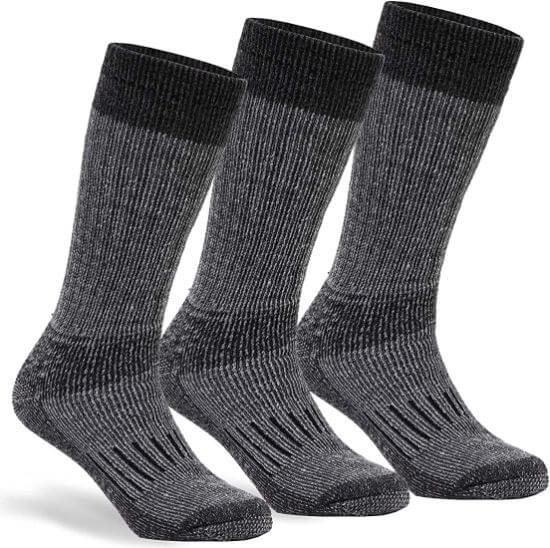As the temperature drops and winter sets in, it’s crucial to keep your feet warm and dry, especially when venturing outdoors. Moisture-wicking socks are a must-have for winter months, as they provide essential benefits to ensure your feet stay comfortable, protected, and free from excessive moisture.
In this blog post, we will explore the importance of moisture-wicking in winter socks and how they can enhance your winter activities.
The Role of Moisture-Wicking
Moisture-wicking refers to the ability of a fabric or material to pull moisture away from the skin and quickly evaporate it. In winter, when you’re wearing thicker socks and boots, your feet are more prone to sweating due to restricted airflow. Moisture-wicking socks work by actively pulling sweat away from your feet, preventing dampness and the discomfort it can cause.
Breathability and Ventilation
Moisture-wicking socks are designed to be breathable and allow airflow, which helps to regulate foot temperature. Proper ventilation reduces the accumulation of sweat and prevents excessive moisture build-up inside your socks. This feature is particularly important during winter activities such as skiing, snowboarding, or hiking, where your feet are more likely to perspire due to physical exertion.
Temperature Regulation
Keeping your feet dry is not only crucial for comfort but also for maintaining optimal foot temperature. Wet feet can quickly become cold, leading to discomfort and even frostbite in extreme conditions. Moisture-wicking socks help regulate foot temperature by preventing moisture accumulation, keeping your feet dry and warm throughout the day.
Odor Prevention
Sweaty feet are a breeding ground for bacteria, which can lead to unpleasant foot odor. Moisture-wicking socks help to minimize this issue by reducing the amount of moisture that remains on your feet. By keeping your feet dry and preventing the growth of bacteria, these socks can help combat odor and keep your feet fresh even during prolonged wear.
Reduced Friction and Blisters
Excessive moisture can cause increased friction between your feet and socks, leading to painful blisters. Moisture-wicking socks minimize this friction by keeping your feet dry and reducing the chances of blisters forming. By eliminating the moisture barrier, these socks allow for smooth movement and reduced irritation during activities.
Material Considerations
When selecting moisture-wicking winter socks, prioritize materials that are known for their moisture-wicking properties. Merino wool, synthetic blends, and specialized moisture-wicking fabrics are excellent choices. These materials not only excel in moisture management but also provide insulation and warmth.
Proper Sock Fit
To maximize the benefits of moisture-wicking socks, ensure you choose the correct size and fit. Socks that are too tight can restrict airflow and hinder moisture-wicking capabilities. Conversely, socks that are too loose may not effectively pull moisture away from your feet. Opt for socks that offer a snug yet comfortable fit, ensuring they cover your feet fully without being constrictive.
Conclusion
Investing in moisture-wicking socks is a smart choice for winter activities and everyday wear. By keeping your feet dry, regulating temperature, preventing odor, and reducing friction, these socks contribute to overall foot comfort and protection. Remember to choose socks made from moisture-wicking materials and ensure a proper fit for optimal performance.
Prioritize your foot health this winter and embrace the benefits of moisture-wicking socks. Whether you’re hitting the slopes, exploring the outdoors, or simply braving the cold, these socks will keep you warm, dry, and ready for any winter adventure.
Note: This blog post is for informational purposes only and does not constitute medical or professional advice. Consult with a healthcare professional or podiatrist for personalized recommendations regarding your specific foot health concerns or conditions.

For over 12 years, I have been testing and reviewing heating technologies that overcome cold weather conditions. In recent years, I have specialized in the heated apparel. I’ve made it my mission to educate people about heated clothing.
